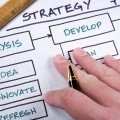Starting A Small Business – What To Think About?
This is the second in our series of blog posts about starting a small business, and this week we will look at what you need to think about when you are planning to start a business.
Next week, we will continue and look at the steps you need to take from registrations to opening for business.
Starting a new business is not as simple as deciding what you want to sell and opening your doors – at least, not if you want to build a successful business.
A business is made up of many parts and you need to think about how these parts will work efficiently and at the right quality standards, right from the start, so that you design your successful business from the ground up.
There are three critical parts of a business, no matter what size and no matter what you sell,
These are: –
- Your customers and your relationships with them;
- How you do the work; and
- Your Finances.
All three have to work well for your business to succeed, and all three have to work well with each other.
Each of those critical parts can be further broken down into key components for building a successful business: –
- Customers
- Your Value Proposition
- Your Customer Segments
- Your Customer Relationships
- Your Channels to Engage with Customers
- Processes
- The Key Activities
- The Key Resources
- Any Key Partners
- Finances
- Your Revenue Streams
- Your Cost Structure
It is important for you to think about these nine key components of your business, and before you start your business, think about designing how they work so as to give you the greatest chance of building an efficient, successful business.
Let’s take each of them in turn. As we do so, you will see how they relate to each other, and as you design how your business’ components work, how each depends on the other or must work in conjunction with each other.
Your Value Proposition
When you start your business, you should not just be selling a product. You need to sell something that is of value.
What that value is, is not necessarily the cost of the product. Every product has an intrinsic value over and above its cost or relative price. Otherwise, a Rolex watch would be worth the same as a Seiko. Your value proposition is the collection of your product(s), ongoing services, and attached ancillary services that you offer in order to meet customer needs. Your value proposition is what makes your product – and your business – different from others who provide the same product.
In all cases, it starts with the customer needs.
If you sell watches, the basic need is to tell the time.
However, the customer may have other needs – to invest in a timepiece he or she can leave to children or a watch that can be worn when digging in the garden. The customer may have psychological needs, a Rolex to show that he or she has “made it” in the world. They may have practical needs – a watch to go to the Moon!
Sometimes, the value proposition is not only in the product but also in the way you sell it or deal with customers. Extra careful service may be part of your value proposition. As a Rolex reseller, your value proposition may be a free clean and polish once a year. Adding bonuses and free gifts that others do not could be your value proposition.
As you design your business, you should think about what is your unique value proposition.
Your Customer Segments
Think about who your customer is – what is the demographic and lifestyle of people who need your product and would be attracted by your value proposition?
To build a successful business you must identify who it is you really want to serve. It is no good selling dive watches to pilots.
The more you detail your main customer characteristics, and break them down into any relevant segments, the more you can refine your marketing and advertising to attract low-hanging fruit, the more you can follow the right strategy to meet the needs and wants of selected groups of customers.
The different customer segments you may need to cater for are: –
- The mass market where you have no specific segmentation of your customers – in other words, your product and value proposition is attractive to a wide range of customers.
- A niche market, where you can segment customers based on very specialised characteristics and need. An example is a garage mechanic specialising in European sports cars, who can even niche further by only specialising in Ferraris.
- A segmented market where you segment one customer segment into further segments. For example, a Family Law firm that deals with a client segment of people divorcing may segment further depending on demographics and have a team of lawyers dealing with men undergoing divorce and another team dealing with women undergoing a divorce.
- A diverse market, like a hardware store that sells the same products to different customer segments – the professional tradesperson to the hobbyist, to the gift shopper.
Your Customer Relationships
Before you open your doors you need to decide what kind of relationship you are going to have with your customer, or the repercussions are going to hit you when you are not ready.
The kind of relationships you develop needs to allow you to find new customers, keep existing customers returning and buying again, and growing the business from your customer base.
Depending on what suits your value proposition and the characteristics of your customer segments, you could develop relationships that are high maintenance, or low maintenance. For example, you could develop mail-order only or self-serve relationships. Or you could develop personal assistance relationships where customers engage with staff or intense one-on-one service relationships where the customer deals with one person through their life.
Knowing and understanding what you should offer will prevent you from losing customers because they did not get the type of relationship they wanted.
Your Channels To Engage With Customers
“Channels” are how you engage with and deliver your value proposition to target customers.
You need to design channels that deliver your value proposition quickly, efficiently and cost-effectively. At the same time, the channels cannot hurt customer relationships or devalue the value proposition.
For example, imagine if Rolex watches were sold as a big-box store self-serve service. It would be a cheap channel of distribution, but would that work?
The channels you decide on need not be your own. For example, you could deliver your value proposition through retail partners, community groups, or a combination of several channels.
Think about what channels would suit your value proposition and your customer segments.
The Key Activities
These are the most important activities your business needs to undertake in order to deliver your value proposition.
Out of everything that you need to do – production, purchasing, marketing, billing and accounting, equipment maintenance, store-front, and so on – what are the most important activities to deliver your value proposition? The answer will be different to different businesses.
For example, for a mass manufacturer, a key activity might be organising an efficient supply chain of raw material. For a firm of tax accountants, their key activity may be training to keep up with new legislation. For a seller of Rolex watches, their key activities may be customer after-sales service and marketing.
Think about all the processes that your business will need to do – which ones are the keys to delivering your value proposition the right way?
The Key Resources
Key Resources are the resources, equipment, and other assets your business needs to have in order to create your value proposition and serve the customer.
Some will be obvious – a manufacturer will need manufacturing equipment. Some not so obvious – a long-time receptionist who knows every one of your clients, down to what type of coffee or tea they drink. You may not even own some resources – we talked about the constant training that tax accountants need to keep up to date. In their case, a key resource is likely to be a professional body from which they can obtain that training.
What are the key resources you need when you start your business?
Any Key Partners
In this case, by “Partners” I don’t mean legal partners in a legal partnership. In this case “Partners” means the group of associates or businesses you do business with in order to provide your value proposition. This would include suppliers, subcontractors, advisers and financiers.
Strong relationships with your Key Partners makes your business more efficient and optimises business performance. You mitigate risk by having a strong partner network you can rely on. These relationships are not only the buyer-seller relationship such as suppliers but also alliances that could be created through joint ventures or strategic alliances. For example, tax accountants could form strategic alliances with a firm of commercial lawyers so that both their sets of clients could benefit from having a good legal/financial advice team.
Who will you be doing business with? Who amongst them – or others – could become Key Partners?
Your Revenue Streams
Your revenue streams are the way that you make money from your customer segments. What revenue streams will you have?
It’s actually not as obvious as “I’ll just sell to them!”
What will you sell? How will you sell?
Here are some ways you can create revenue streams from your customers: –
- Selling them the rights to the physical good or the effects of the delivered service. This is the most common “I’ll just sell to them” revenue stream.
- Leasing or renting the good or service to them where they have to return it at the end of a term.
- Pay-for-use like a delivery service or Uber where they only pay when they use.
- Subscription service like some software.
- Paid after-sales support, for example, installation fees.
- Regular maintenance services
What are the ways you will earn income from your customers in providing your value proposition? Are there any supporting or ancillary revenue streams?
Your Cost Structure
This describes how your expenditures will be driven.
Your costs are made up of: –
- Fixed costs – costs that do not vary with the volume of production or sales, for example, Rents or administrative salaries.
- Variable costs – Costs that do vary with volume such as production labour costs or cost of materials used in production.
Some of your costs may vary according to economies of scale. In these, costs reduce the more you use or buy. For example, as you ramp up the purchase of supplies, you may open up the opportunity of bulk discounts. The rental of office space is fixed, but if you employ more people to produce your value proposition, the economies of scale mean that you produce more income for the same rent.
Once you understand your cost structures, you can make decisions about how to manage them to ensure they create the right value proposition. For example, you can be cost-driven if you own a $2 shop. You can manage your costs so that they are the lowest possible because you provide the cheapest possible goods. Or, you can be value-driven and sell your product for a price that is multiple times the cost of production because your value proposition is high (back to Rolex!).
Consider and understand what your cost structures will be. What strategy will you use to manage the costs so that you deliver your value proposition?
Understand How Your Business Will Succeed
In summary, this is a brief look at the components of your business that you need to think about in order to prepare your business for success.
Get to know and understand how your business will work.
If you want to learn more about the components of your business, explained as “The Business Model Canvas”, you can find out more here (I am not an associate).
As part of our “Starting A Small Business Series”, you can learn more by joining our online program called “How To Start Your Own Business…Without Pain”. Find out more about it here.
Next week, we will look at the steps to take in starting your own small business – from idea to registration to opening your doors.
See you then!






No comments yet.
Add your comment